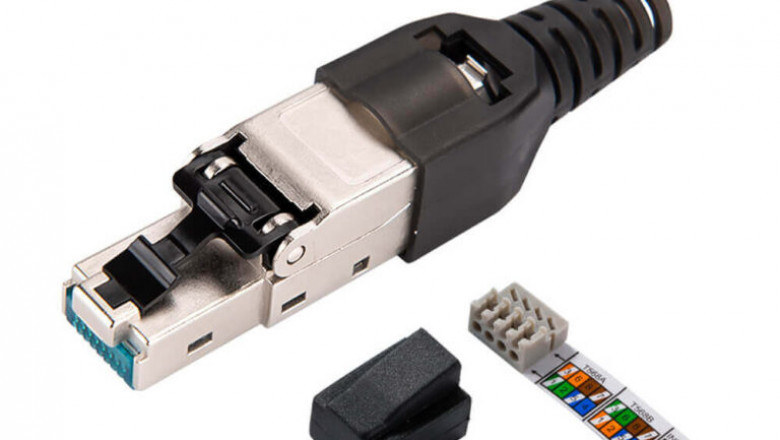views
In the realm of IT infrastructure, the term network accessories encompasses a broad spectrum of components that facilitate and enhance the connectivity, performance, and management of computer networks. These accessories, often considered peripheral to the core hardware, play a pivotal role in ensuring seamless communication and data transfer across various devices and systems. From physical connectors to advanced management tools, network accessories are integral to building and maintaining robust IT networks.
Understanding Network Accessories
What Are Network Accessories?
Network accessories refer to the supplementary components that support and optimize the functionality of primary networking hardware like routers, switches, and servers. While they may not be the central elements of a network, their role is indispensable in ensuring efficient data transmission, network security, and overall system performance.
Importance in IT Infrastructure
Incorporating the right network accessories can significantly enhance the capabilities of existing IT hardware. They enable better data flow, reduce latency, improve security, and ensure compatibility between different network devices. Without these accessories, even the most advanced computer hardware might underperform or face connectivity issues.
Types of Network Accessories
1. Networking Cables
Networking cables are the fundamental physical medium through which data travels across a network. They come in various types, each serving specific purposes:
-
Ethernet Cables (Cat5e, Cat6, Cat6a, Cat7): These are the most common cables used in local area networks (LANs). They differ in terms of speed, bandwidth, and shielding, with higher categories offering better performance and reduced interference.
-
Fiber Optic Cables: Used for high-speed data transmission over long distances, fiber optic cables offer higher bandwidth and are less susceptible to electromagnetic interference compared to copper cables.
-
Coaxial Cables: Though less common today, coaxial cables are still used in certain networking scenarios, especially in legacy systems.
2. Network Interface Cards (NICs)
A Network Interface Card (NIC) is a hardware component that allows computers and other devices to connect to a network. NICs can be integrated into the motherboard or added as expansion cards. They support various network protocols and can operate over wired (Ethernet) or wireless (Wi-Fi) connections. Modern NICs often support high-speed data transfer rates and advanced features like offloading and virtualization support.
3. Network Switches
Network switches are devices that manage data traffic within a LAN by forwarding data packets to specific devices based on their MAC addresses. They operate at the data link layer (Layer 2) of the OSI model and can support multiple ports, allowing numerous devices to connect to the network simultaneously. Managed switches offer additional features like VLAN support, Quality of Service (QoS), and network monitoring capabilities.
4. Routers
Routers are devices that connect different networks, such as a local network to the internet. They operate at the network layer (Layer 3) of the OSI model and determine the best path for data packets to travel across interconnected networks. Routers can also provide additional functionalities like firewall protection, VPN support, and wireless access points.
5. Wireless Adapters
Wireless adapters enable devices to connect to Wi-Fi networks. They can be built into the device or added as external USB adapters. These accessories are essential for laptops, smartphones, and other mobile devices that require wireless connectivity.
6. Media Converters
Media converters are devices that enable the interconnection of different types of network media, such as converting fiber optic signals to Ethernet signals. They are particularly useful in scenarios where upgrading the entire network infrastructure is not feasible, allowing for gradual transitions between different media types.
7. Network Taps
A network tap is a hardware device that provides a way to access the data flowing across a computer network. It allows for real-time monitoring of network traffic without affecting the network's performance. Network taps are commonly used for network intrusion detection systems, VoIP recording, and other monitoring applications.
8. Rack Mounts and Enclosures
Rack mounts and enclosures are physical structures that house networking equipment like switches, routers, and servers. They provide organization, security, and cooling for the hardware, ensuring optimal performance and longevity. Properly designed racks and enclosures can also facilitate easier maintenance and upgrades.
Selecting the Right Network Accessories
Choosing the appropriate network accessories depends on various factors, including the specific requirements of the network, budget constraints, and future scalability considerations. Here are some tips to guide the selection process:
-
Assess Network Needs: Determine the data transfer speeds, number of devices, and types of applications that the network will support.
-
Compatibility: Ensure that the accessories are compatible with existing IT hardware and network protocols.
-
Scalability: Consider future growth and select accessories that can accommodate increased traffic and additional devices.
-
Quality and Reliability: Opt for accessories from reputable manufacturers known for producing high-quality and durable products.
-
Budget: Balance performance requirements with budget limitations to find cost-effective solutions without compromising on quality.
Benefits of Quality Network Accessories
Investing in high-quality network accessories can yield numerous benefits:
-
Enhanced Performance: Quality accessories ensure optimal data transfer speeds and reduced latency.
-
Improved Security: Reliable accessories can help protect the network from unauthorized access and potential threats.
-
Increased Longevity: Durable components reduce the frequency of replacements and maintenance, leading to cost savings.
-
Better Compatibility: High-quality accessories are more likely to be compatible with a wide range of devices and network configurations.
Conclusion
While often overlooked, network accessories are vital components that significantly impact the performance, security, and reliability of IT infrastructures. From networking cables to advanced monitoring tools, these accessories support and enhance the capabilities of core networking hardware. By understanding their types, functions, and importance, organizations can make informed decisions when selecting and integrating these components into their networks, ensuring seamless and efficient communication across their systems.
Note: The information provided in this article is based on the latest available data and may be subject to change. Always refer to the manufacturer's specifications and guidelines when selecting and implementing network accessories in your IT infrastructure.














Comments
0 comment